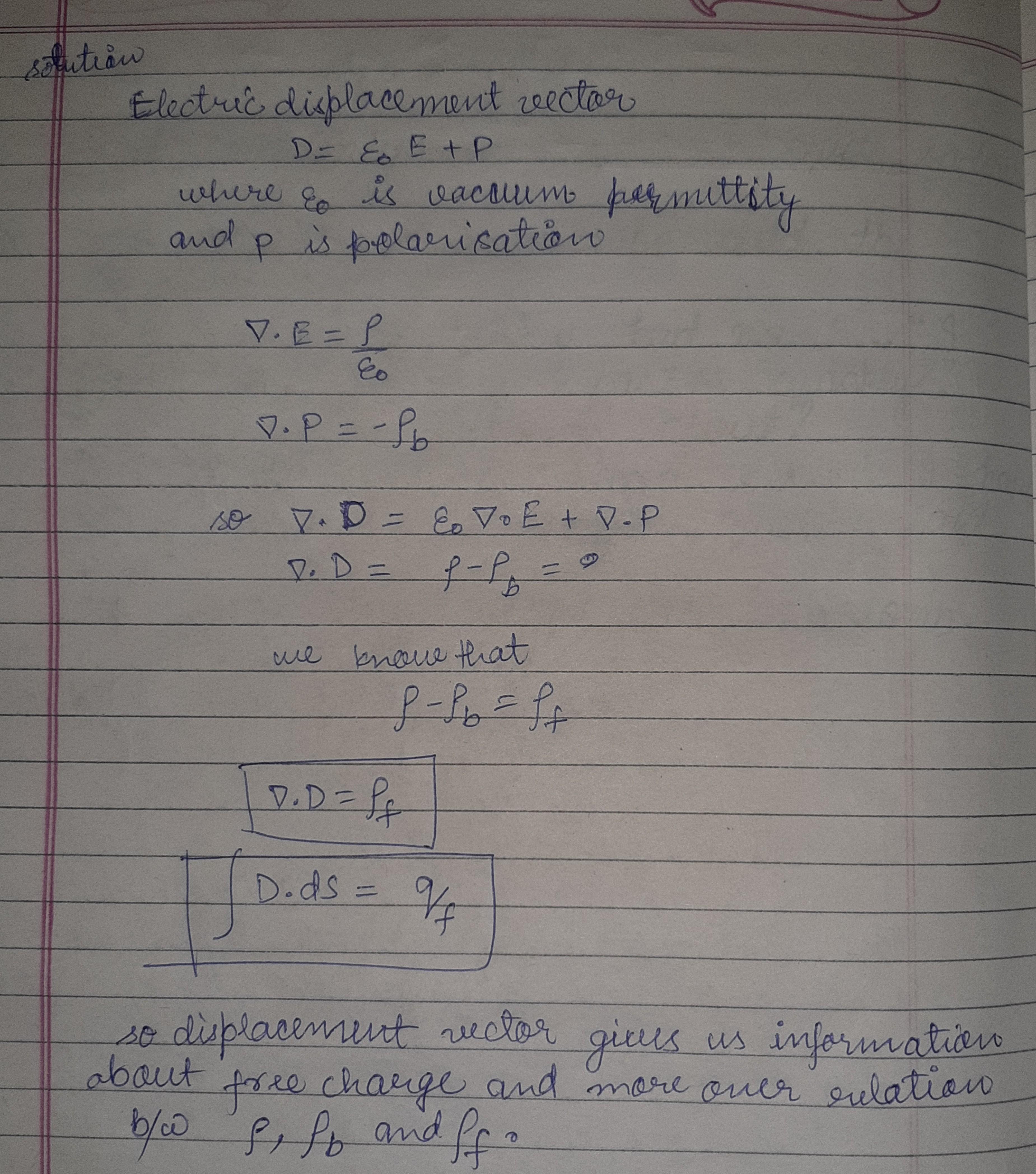Time management is very much important in IIT JAM. The eduncle test series for IIT JAM Mathematical Statistics helped me a lot in this portion. I am very thankful to the test series I bought from eduncle.
Nilanjan Bhowmick AIR 3, CSIR NET (Earth Science)Do You Want Better RANK in Your Exam?
Start Your Preparations with Eduncle’s FREE Study Material
- Updated Syllabus, Paper Pattern & Full Exam Details
- Sample Theory of Most Important Topic
- Model Test Paper with Detailed Solutions
- Last 5 Years Question Papers & Answers
Sign Up to Download FREE Study Material Worth Rs. 500/-










 >
>









Ruby negi
Electric displacement, auxiliary electric field or electric vector that represents that aspect of an electric field associated solely with the presence of separated free electric charges, purposely excluding the contribution of any electric charges bound together in neutral atoms or molecules. If electric charge is transferred between two originally uncharged parallel metal plates, one becomes positively charged and the other negatively charged by the same amount, and an electric field exists between the plates. If a slab of insulating material is inserted between the charged plates, the bound electric charges comprising the internal structure of the insulation are displaced slightly, or polarized; bound negative charges (atomic electrons) shift a fraction of an atomic diameter toward the positive plate, and bound positive charges shift very slightly toward the negative. This shift of charge, or polarization, reduces the value of the electric field that was present before the insertion of the insulation. The actual average value of the electric field E, therefore, has a component P that depends on the bound polarization charges and a component D, electric displacement, that depends on the free separated charges on the plates. The relationship among the three vectors D, E, P in the metre-kilogram-second (mks) or SI system is: D = ε0E + P (ε0 is a constant, the permittivity of a vacuum). In the centimetre-gram-second (cgs) system the relationship is: D = E + 4πP.